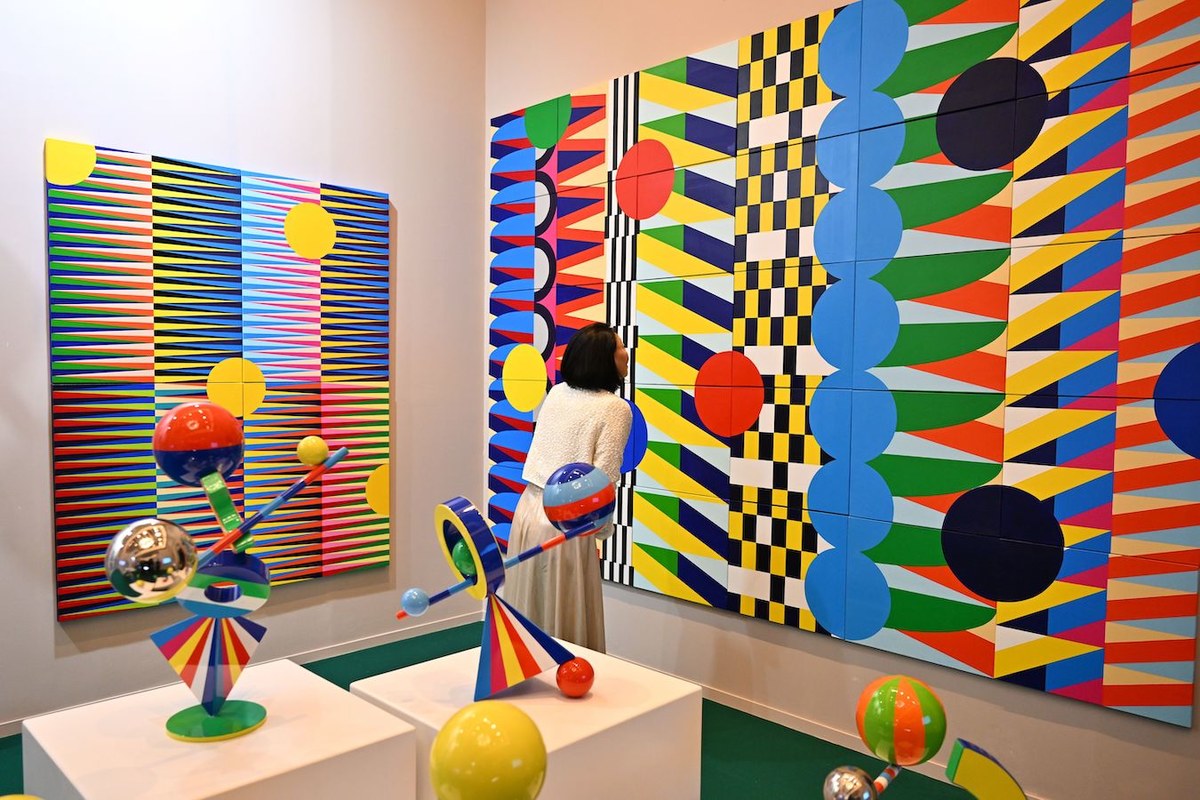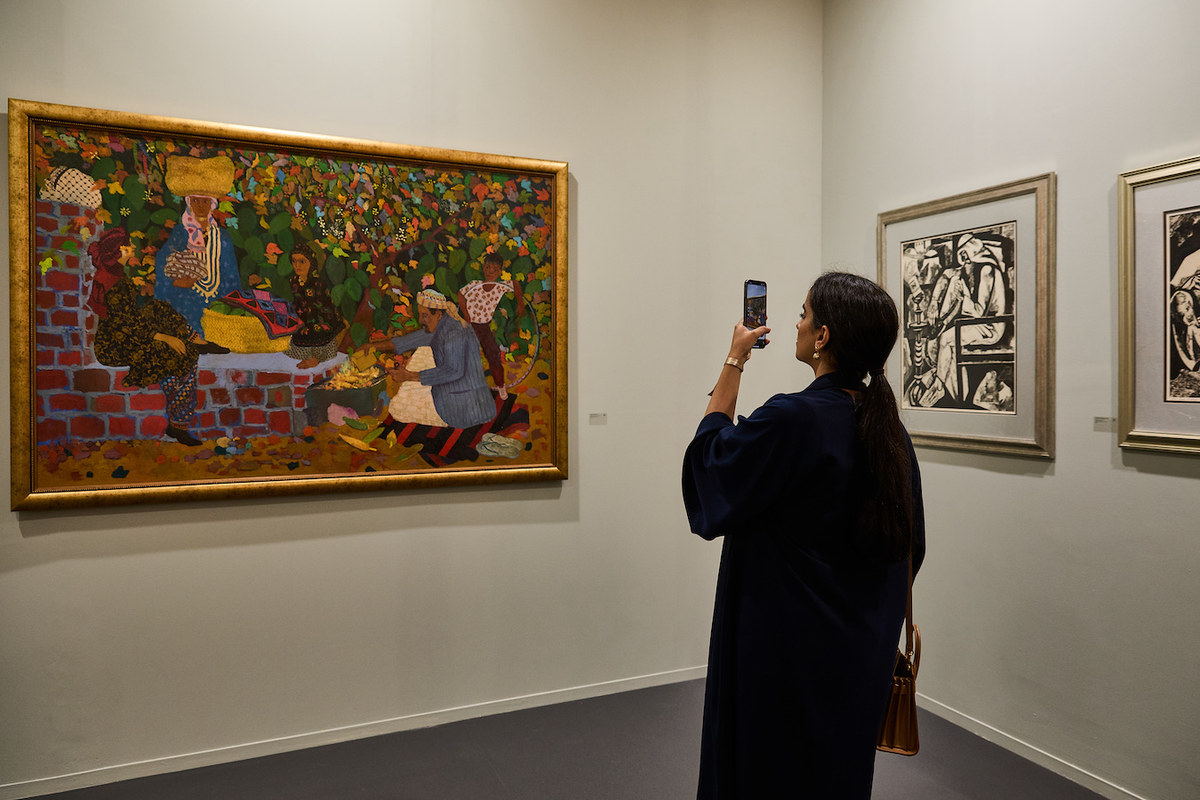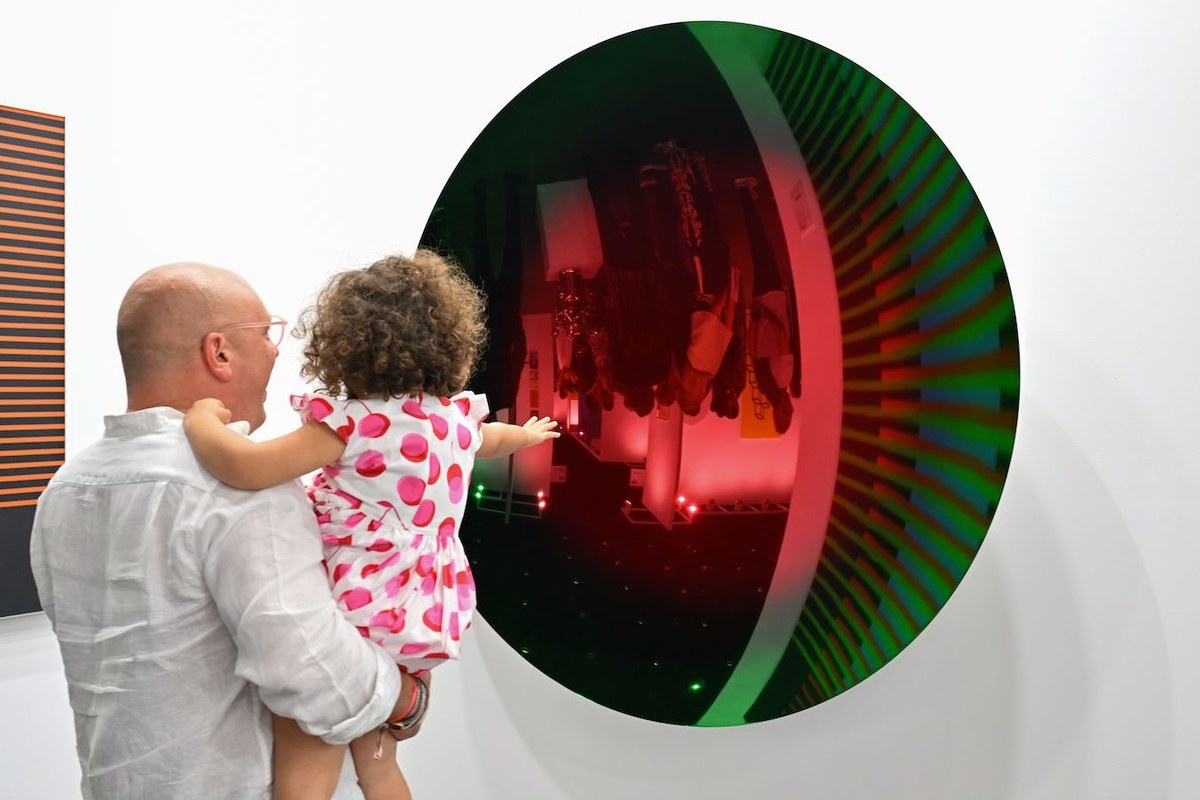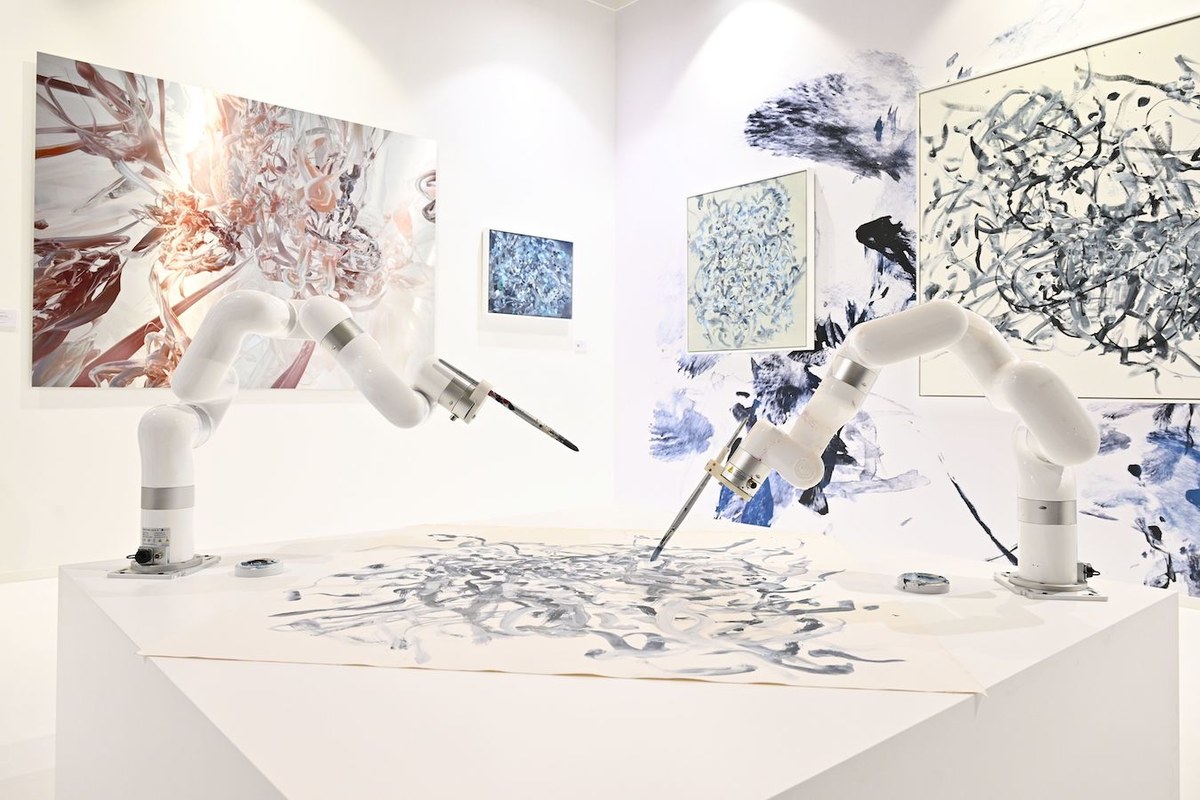DUBAI: The 17th Art Dubai fair, where more than 100 galleries from around the world put on their best presentations of contemporary, modern and digital art, is open for business.
Non-commercial activities, such as artist talks and children’s programming, have also been organized for the event, which runs from March 1 until March 3.

Art Dubai 2024, Installation view. (Supplied)
Event organizers have reinforced their longtime commitment to shining a light on talent emerging from the Global South, from Latin America to North Africa and the Far East.
“We have our own way of reading what contemporary art is,” the fair’s Spanish artistic director Pablo del Val said. “We exhibit and try to push proposals that are coming from geographies that aren’t the focus in any major art fair in the West.”

Art Dubai 2024, Installation view. (Supplied)
The concept of healing is the theme of the fair’s contemporary section, featuring paintings, installations, sculptures, textile works, among other artistic mediums. Meanwhile, the modern section pays tribute to regional masters who were active in the 20th century. This year, the focus is on ties between Arab artists and the Soviet Union, where some received their formal education.
An interesting booth at Art Dubai Digital comes courtesy of a London-based design practice, Looty, which is implementing technological means to “digitally take back” stolen African artifacts stored in Western museums. “We were inspired by a fact that comes from the UN: 95 percent of African culture and heritage is held outside of Africa. Hearing that shocked us and also inspired us,” Looty’s co-founder, Ahmed Abokor, told Arab News.
With their faces covered in masks, Abokor and his gallery partner Chidirim Nwaubani went inside London’s British Museum, committing a “digital heist,” in which they 3D-scanned African artifacts with their phones and iPads. “It’s symbolic,” said Abokor. “We incited a bit of worry, probably, but we didn’t actually take anything. We actually did our due diligence, speaking to lawyers three months before we went in there. We didn’t want to do anything illegal.” At the fair, a handful of Benin statues are displayed in eye-catching 3D hologram presentations.

Art Dubai 2024, Installation view. (Supplied)
Meanwhile, in the contemporary section, Dubai’s Tabari Art Space is returning to the fair with an all-women booth, showcasing colorful works on paper, paintings and stitched pieces, exploring themes of the land and the body, by Levant and Gulf artists Tagreed Darghouth, Maitha Abdalla, Chafa Ghaddar, Hana Almilli, Miramar Al-Nayyar and Aya Haidar. “Corporeal: Lands Through The Female Gaze” is the title of the overall exhibit, envisioned by the gallery’s founder, Maliha Tabari, who, in her own words, “wanted to do something different.
“We’re female-led as a gallery,” Tabari told Arab News. “In these past three years, we naturally picked up many female artists from this part of the world because we want to represent them ... The woman in our region is strong and we wanted to show her strength.”
At a time of continuing violence in Gaza, some fairgoers expressed their solidarity by wearing Palestinian-inspired garments, such as the black-and-white “keffiyeh” headscarf. Based between Dubai and Ramallah, Zawyeh Gallery, specializing in showcasing emerging and established Palestinian artists, is represented at the fair. At its multi-artist booth, the Palestinian painter Khaled Hourani is showing a series of watermelon images (many of which have been sold). The fruit, bearing the same colors as the Palestinian flag, has become a symbol of solidarity with the Palestinian cause.

Art Dubai 2024, Installation view. (Supplied)
From Marrakech, Comptoir des Mines Galerie is presenting a selection of works by Moroccan artists who use natural materials, such as soil and metal, in their creations. In particular, a standout work comes from French-Moroccan artist Sara Ouhaddou, who juxtaposed geometrical pieces of tinted Iraqi glass into a large circular form made of wood. The work, entitled “Time is still long — beyond our perception” is partially about regional artisans and how the cultural legacy of hand craftsmanship is being lost.
A number of the older generation of artists are also represented at Art Dubai by nine galleries, hailing from Beirut, Dubai, Kampala, London, among other cities. Jeddah’s Hafez Gallery is showcasing one large, vibrant painting by the Yemeni artist Hakim Al-Akel, who was born in 1965. Entitled “Dialogue in the Market,” the highly patterned painting was created in 1991, portraying a leafy scene populated by a few workers and sellers.

Art Dubai 2024, Installation view. (Supplied)
There are also monochromatic works by the Saudi artist Abdulsattar Al-Mussa, who formerly lived in Russia and Ukraine. Being away from his homeland inspired him to make images that were based on his memories.
“I think it’s important to show Abdulsattar at Art Dubai because he has had a lot of success abroad,” Hafez Gallery’s curatorial director, Alexandra Stock, told Arab News, “but it’s very nice that he is having another upwind, a push in the region, that he’s being acknowledged back home.”












